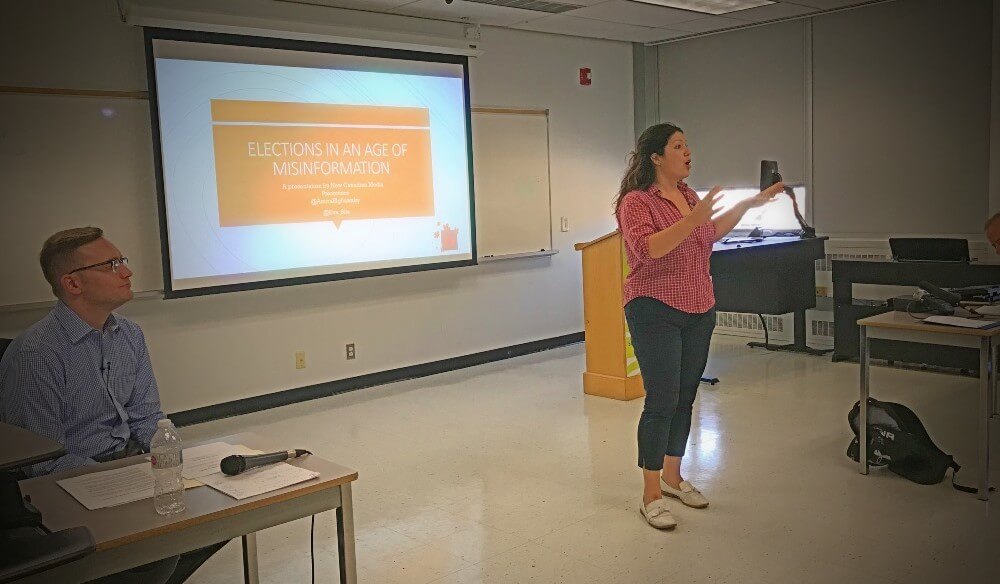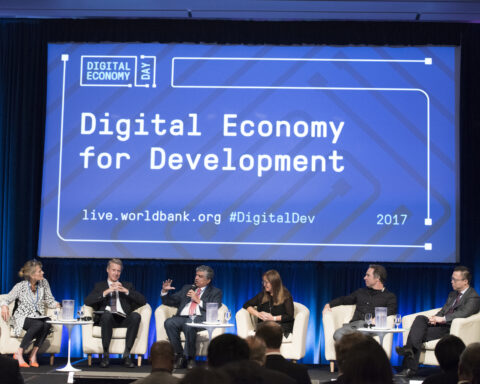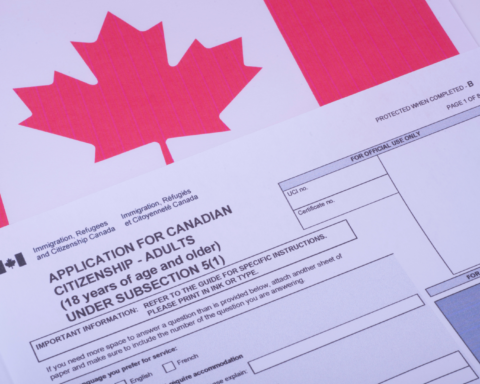We have all heard the phrase “fake news” bandied about over the last couple of years, most notably by and in the context of Donald Trump. Though the US President uses the term to attack the press, NCM wanted to get to the real root of the phrase. We especially wanted to contextualise it for news and politics.
This past weekend, the first of three “Fake vs Fact” workshops organized in collaboration with New Canadian Media, ByBlacks.com and the National Newsmedia Council, took place in Toronto at Centennial College’s Story Arts Centre. The purpose of the workshop was to discuss fake news. The workshop looked at how to spot fake news, how to stop it and how to define it. To discuss fake news’ consequences was a major factor for the gathering of news professionals and community members.

What is fake news, really?
“Fake news” has been said so often that it has become a catch-all term that has lost meaning. When people discuss fake news, two other words that often come up are misinformation and disinformation. Misinformation is information that is not accurate. For example, if I were to say “the current prime minister of Canada is Pierre Trudeau,” that would be misinformation. Think of misinformation as “mistaken information.”
Disinformation is information that is false and spread with the explicit intention of deceiving. If, for example, I said “I am the current prime minister of Canada,” that would be disinformation. Think of disinformation as “dishonest information.” Disinformation is meant to fuel insecurities, stoke fears and create division. It has a motive or an agenda to push, whether personal, financial or political. When people say something is “fake news” they are likely accusing the information of being disinformation.
The term “fake news” is also inaccurate because usually, the false information circulating is not spread by a legitimate news organization or an accredited member of the media. Fake news is typically shared via social media, which is problematic because it allows little accountability. It is difficult to verify information but easy to share on social media. On these platforms, content that gets a lot of engagement gets ranked higher. It will hence show up earlier in search results and on newsfeeds/timelines, increasing the likelihood that it will be seen.
Responsible journalism: consumption
Sharing is a huge problem when it comes to disinformation. That saying “a lie gets halfway around the world before the truth can get its pants on,” is particularly true when it comes to disinformation online. It can take hours to fact-check a story, which not everyone knows how to do. Also, it is rare to be punished for spreading disinformation online.

One of the speakers at the workshop, award-winning journalist Susana Mas, recommended that people create a checklist of questions they must answer before deciding to share a post. She said that we should ask ourselves questions like, who’s sharing this information, do you trust them and what’s the original source? It is important to consider the source of the information itself and not just the person who has presented that information to you, because while you might trust the person sharing the post, you might not trust their sources.
Mas stressed the importance of viewing media like pictures and videos with a critical lens, even seemingly-innocent things like memes. It is important not to react too emotionally or too quickly when it comes to headlines and tweets, Mas remarked.
“Words matter. And we all have a role to play” as both producers and consumers of news, she added.
Responsible journalism: production
Responsible journalism is of the utmost importance given the prevalence of disinformation and misinformation ahead about the federal election. Performing journalism responsibly means being transparent with your information: revealing what you know, what you don’t know and how you came to know what you do, including providing links and sources.
It is okay to not know something, or to have incomplete information, or to say that the story is being followed and will be updated. Again, in the age of fake news, it’s more important to be accurate than to be first.
Being a responsible journalist means accepting that you have a bias. Biases evolve from our experiences and perceptions, both of which are unique to every individual. If you can identify your bias, you are better equipped to keep this in check and make sure they do not bleed into your work.
Another aspect of responsible journalism is not spreading stereotypes or hurtful tropes about people, particularly marginalized groups. Words matter and so do the connotations of the words you use. For example, referring to immigrants or refugees coming to a country as an “invasion” is both inaccurate and inappropriate because it has a negative image and a negative connotation to it.

“Change starts with individuals, and it’s important that we start,” said Eva Salinas.
Salinas is the managing editor of OpenCanada.org and a journalism instructor. She was one of the speakers on Saturday. According to Salinas, people care about the issue of fake news and want to get involved, but do not always know how.
Salinas said that our individual voices are more important now than ever: “We all use our voice in different ways, and we have to use them responsibly.”
The future and fake news
I, like workshop speaker Brent Jolly, the director of communications, research and community management with the National Newsmedia Council, found our conversation encouraging.
In the era of fake news, I see our role as journalists as being similar to that of climate scientists. We have to share what we know with the public because the issue affects us all. We cannot deny the problem or run away from it because the effects are real, and if we don’t act the consequences could be dire.
Marcus is a poet, editor and freelance journalist based in Toronto. He currently works with New Canadian Media as an Editor and as a Freelance Writer for ByBlacks.com, The Edge: A Leader's Magazine and The Soapbox Press.




